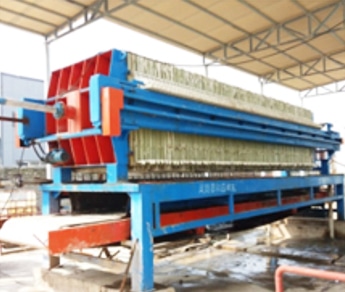DAF systems, also known as dissolved air flotation systems, are commonly used in a variety of processing applications, including food and dairy, meat, fish and poultry, to remove suspended solids, fats, oils and greases from a variety of wastewater streams. DAF systems are also used in a variety of industrial, manufacturing, oil and gas drilling, and marine wastewater treatment applications.

High treatment rates, small footprints and operational flexibility are often advantages for these applications. DAF systems inject tiny air bubbles into the waste gas, which cling to solid particles and clump together and float to the surface. These form a semi-solid sludge (often called DAF Sludge), which the DAF system scrapes into a collection hopper or tank, and this DAF sludge is then converted into something valuable, such as fertilizer and fuel, through a treatment process such as dewatering and drying.
The KUOSI brand of screw presses and filter presses are effective and well-proven solutions for dewatering sludge skimmed from DAF processes and wastewater systems. Benefits include
- Reduces total treatment volume by up to 80%
- Produces stackable cakes for easy loading and transportation
- Reduces sludge volume and weight, reducing treatment costs
- Reduces mess and associated cleanup
Given the diversity of DAF sludge treatment options, it is often recommended that field application testing be performed first to determine optimal equipment sizing, dewatering results and process parameters. Also used in conjunction are system controls and auxiliary equipment such as pumps, polymer dosing systems and screw conveyors as well as connecting hoses for complete setup.
Test procedures typically include optimal polymer type, throughput vs. cake solids, and polymer vs. cake solids. A common basic process is typically described as follows.
Process wastewater flows into the DAF tank where suspended solids float to the surface forming a layer of sludge float that is periodically scraped off and enters the wet sludge holding tank.
A mixing tank gently mixes the solids into a homogeneous dilution of solids and liquid, which is then fed into the dewatering equipment using a feed pump. Additional chemicals are often added to help promote solids formation.
A feed pump (often an air-operated diaphragm or screw pump) pulled from the bottom of the mixing tank continuously feeds the sludge dewatering unit. In the case of a filter press, for example, the sludge cake after dewatering, small equipment (50 sq. ft. or less) the cake can be dropped into the sludge tank and then cleaned by hand. For large equipment (over 50 square meters), you can choose a suitable sludge conveyor or naturally fall off to the ground according to the site situation or application requirements. For natural fall off to the ground, the platform of the filter press needs to be built higher to facilitate the cleaning of the mud cake later.

A float switch opens a normally closed butterfly valve in the clarified liquid discharge line and adds recirculating make-up water to the mixing tank to maintain process conditions under low water level conditions.
